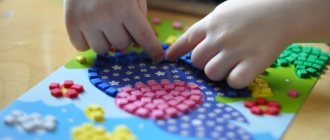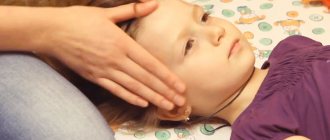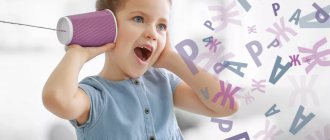Children tend to have a lisp, not pronounce sounds, skip sounds or replace them with simpler ones. This is due to the imperfection of the articulatory apparatus. Is it possible to fix this problem?
Improving a child’s speech at home
When a child begins to make his first sounds, we are touched, it seems so funny and amusing to us. But if you hear such speech from an adult, then this admiration will disappear. But the ability to speak correctly needs to be developed in early childhood, and if this is not done, in the future a person will not be able to fully communicate with other people, his speech will be distorted, ugly and incomprehensible. And if your child is already experiencing difficulties in pronouncing any sounds, conduct speech therapy classes and exercises with him - they perfectly develop the articulatory apparatus, improve speech, and teach children to correctly express their thoughts.
Ideally, by the age of 4-5 years, children master clear pronunciation of all sounds. For various reasons, the process of developing correct sound pronunciation slows down for many preschool children.
Defects in sound pronunciation will not disappear on their own; to eliminate them, systematic exercises with a speech therapist, as well as joint classes with parents, are necessary. A properly structured training system is your main assistant. In this article we will reveal for you several simple techniques and exercises, by doing which your child will learn correct pronunciation
Where to start speech therapy exercises? The structure of a well-constructed lesson.
After a thorough diagnosis of the child’s speech, you can begin classes aimed at correcting it. It is worth noting that as a result of a speech examination, the specialist receives information concerning not only his speech development, but also his intellectual and psychomotor development.
A competent specialist uses this data to influence the child using the most developed resources of the child himself, based on what is interesting to the child. He will offer you the most optimal scheme for constructing a speech therapy lesson.
Remember that at this age 15-20 minutes is enough; material given in excess of the norm will not bring results and will not be absorbed in full. Also understand that play is the main activity at 4-5 years old, so the process of correcting sound pronunciation is built in a playful form.
Responsibilities of a specialist
Most believe that its task is to correct incorrect sound pronunciation. But a speech therapist has many responsibilities that involve more than just production and automation of sounds. What are his responsibilities:
- Diagnosis of speech development of a child or adult.
- Drawing up a plan of correctional work taking into account the individual characteristics of the child or adult.
- Work on sound pronunciation.
- Work on coherent speech.
- Work on voice and diction.
- Teaching writing and reading skills (i.e., a specialist helps the child learn the basics of literacy).
- Work on the development of the motor sphere.
- Parent consultation.
A good speech therapist is a specialist who copes with his professional responsibilities. And for this he must have the necessary skills and abilities.
Types of speech therapy classes for children
Speech development classes may consist of:
- finger games;
- articulatory gymnastics;
- games for onomatopoeia, hearing development, logorhythmics (poetry with movements);
- poems for replenishing vocabulary, speech development.
Speech therapy classes should be conducted daily. The most difficult thing about them is to be able to interest the child. Therefore, it is not at all necessary that such classes be conducted like lessons at school, where students humbly sit at their desks and the teacher explains a new topic in a monotone voice. For kids, such activities are akin to torture. Turn on your imagination: let your baby learn with you, playing on the rug, sitting on a pillow, hiding in his hut, jumping or running... The main thing is the final result. Build your lessons in a playful way - this way your child will remember the material better and won’t get tired at all.
In addition, when arranging speech therapy classes with your child at home, you should:
- Start classes with 2-3 minutes, gradually increasing their duration to 15-20 minutes.
- Make classes interesting so that the child has a desire to study. Never force your child to do exercises - you will get the opposite result.
- Perform tasks more often, but let them be short-term.
- Treat your child’s failures easily, without shouting, with understanding. Analyze each situation together, for example, look for the reason why the child has such a naughty tongue, and how to fix it.
Now let's look at each of the types of speech therapy games listed above.
Finger games
Through finger games, a child's fine motor skills develop. How does this help speech development? Scientists have found that there is a close relationship between the human hand and the part of the brain that is responsible for speech. Therefore, by learning texts using finger exercises, the child develops spatial thinking, imagination, reaction speed, attention and emotional expressiveness. Memorizing texts occurs faster, and speech becomes more expressive.
The effectiveness of finger games is achieved if you work with your child daily, devoting only 5 minutes to such exercises. Let's look at a few examples of finger games.
- "Flower". Fingers pointing up, gathered together. We make a bud from half-bent palms, pressing them together. We begin to pronounce the quatrain, performing movements on every second line:
The sun is rising -The bud is blooming! (spread the fingers of both hands to the sides, keeping the lower part of the palms together)
The sun is setting -
The flower goes to bed! (return to the starting position).
- "Kitty." Place your palms on the table and clench them into fists. To the words “Fist - palm. “I’m walking like a cat,” we simultaneously straighten our fingers, without lifting the handles from the surface of the table, and squeeze them. To complicate the exercise, unclench your palms alternately on the count of “one, two.” You need to repeat the exercise 3-5 times.
- "The bird is flying." Cross your arms with your palms in front of you. Interlace your thumbs together to imitate the head of a bird. The remaining fingers are wings that will need to be flapped without separating the fingers.
The birds have flown (flapping their wings)We sat down and sat, (press our palms to our chests)
Then we flew.
- "Maple". This game is suitable for children 3 years of age. All movements are performed in accordance with the text of the poem:
The wind quietly shakes the maple tree, (spread your fingers and pull them up)Tilts to the right, to the left: (swing your palms to the right and left)
One – tilt and two – tilt, (tilt your palms as low as possible in the indicated directions)
The maple leaves rustled. (we move our fingers quickly)
- "Cake". We perform movements according to the text of a poetic work.
We remember the dough with our hands (squeeze and unclench your fingers several times)We will bake a sweet cake. (think imaginary dough)
Lubricate the middle with jam (make circular movements with your palms on the table surface)
And the top with delicious cream (with three palms touching each other in a circular motion)
And coconut crumbs
We will decorate the cake a little (we imitate the action with both hands)
And then we’ll make tea -
Invite a friend to visit! (we shake our left hand with our right hand).
- "Winter". Suitable for children 4-7 years old.
One, two, three, four, five, (fingers bend one at a time)We went out into the yard for a walk.
We sculpted a snow grandmother (we perform the movement of sculpting snowballs)
The birds were fed grains (we throw grains, rubbing our fingers together)
After we rode down the hill, (we run the palm of our right hand over our left palm)
They were happily lying around in the snow. (we alternately place the pens on the table surface, either with our palms or with our backs)
We came home in the snow, (shake off the snow from our palms)
We ate borscht and went to bed. (we make movements with a spoon and pretend to be asleep by folding our hands, palms to palms, and placing them under our cheeks)
Finger games can be used as physical education during speech therapy classes. They help to change the type of activity without losing children's attention and desire to learn. In addition, it is interesting, fun and useful. The main thing is to tell the poems with exciting expression and clearly show the movements.
In addition, finger games help:
- develop coordination of movements of both arms of the child;
- combine the child’s speech and physical activities, use them simultaneously;
- develop precise and differentiated movements of children’s fingers and hands;
- learn to repeat the movements of adults;
- become more attentive, develop visual perception;
- improve memory, imagination, perseverance.
Finger games need to be done systematically. Classes are possible with one child or with a group of children. However, it is important to take into account the age of the children, their mood, readiness for classes, desire and opportunity.
Articulation gymnastics
You can find the presentation and musical accompaniment for articulatory gymnastics on this page.
Articulatory gymnastics is necessary for correct sound pronunciation, strengthening the muscles of the face, tongue, lips, and soft palate. There are many exercises, a specialist will help you choose the most suitable ones for your sounds.
Tasks are divided into static and dynamic. Each has a name that your baby can easily remember, which will make it much easier to understand the instructions during class. Using a little imagination, you can go on fabulous trips with your child, where the main character will be the child’s tongue. There are many variations, it all depends on you. Below are the same exercises; after reading the descriptions, you will understand that they are not complicated and do not require additional knowledge from you (parents).
Articulatory gymnastics is a group of exercises for the tongue and lips. They are the main ones in the process of sound pronunciation. If the tongue is not developed enough, a person will not be able to pronounce sounds, which means that his speech will be incomprehensible or not clear enough.
They perform articulatory gymnastics in front of a mirror - this way you can see the correct movements of the tongue and lips during exercise. It is very important for children to see how his tongue and lips move, how and where they are located. This way, understanding of their correct location quickly comes, on which the effectiveness of articulatory gymnastics depends. Speech therapists recommend doing the exercises twice a day for 5-7 minutes. As a result, your child will receive correct and clear speech.
Let's look at a few simple but effective exercises.
- "Smile." Stretch your lips strongly in a smile, but your teeth should not be visible. Hold a smile for 30 seconds.
- "Fence". Smile hard so that your teeth are visible, hold the smile.
- “Let’s punish the naughty tongue.” Open your mouth slightly, place your tongue on your lower lip and, slapping it with your lips, pronounce “five-five-five...”.
- "Tube". Open your mouth, stick out your tongue and try to bend its side edges upward in the form of a tube, hold it in this position for 30 seconds.
- “Let’s lick the jam.” Slowly, without lifting the tongue, first lick the upper lip from corner to corner, then repeat the procedure with the lower lip.
- “The clock is tick-tock.” Make a smile, open your mouth slightly, then use the tip of your tongue to touch the corners of your mouth one by one.
- “Brushing our teeth.” Smile, open your mouth slightly, then with the tip of your tongue, pressing it hard enough, brush the inside of the teeth of the lower row (7-10 times). Repeat the same exercise with the teeth of the upper row (7-10 times).
- "Swing". Smile and open your mouth wide. Then lower the tip of the tongue behind the bottom row of teeth by “one”, and lift it by the top row by “two”. Repeat – 4-5 times.
- "Snake". Open your mouth, stick out the narrow part of your tongue from your mouth and quickly hide it back. Touching teeth and lips is prohibited.
- "Rent a pencil." Place a pencil on the table in front of the child. Ask him to smile, place the wide front part of the tongue on the lower lip and, slowly (exhaling air), blow on the pencil so that it rolls along the surface.
In addition to articulatory gymnastics, exercises are used aimed at developing the voice, breathing, and speech hearing. In this complex, classes will allow the child to develop correct sound pronunciation.
Logorhythmics, hearing development and onomatopoeia
Phonemic hearing (also called speech hearing) is the ability to distinguish, understand and produce sounds. With insufficient development of speech hearing, the perception of what is heard is distorted, and accordingly, speech is produced incorrectly and unclearly. To correct or prevent the development of this problem, the following exercises are performed with children:
- “Listen Ears” is a game for developing hearing. The goal is to improve auditory attention and strengthen the ability to distinguish sounds. The adult shows the child several different objects that can make sounds - spoons, drums, glasses, rattles, maracas, etc. Together with your baby, you need to listen to how objects sound. Then the adult asks the child to turn away and guess what object will sound behind him.
- “Where is it ringing?” - an exercise to develop hearing. To play you will need a bell and a spacious room. The child stands with his eyes closed, while the adult quietly moves around the room, ringing the bell in different places. The child’s task is to point with his hand where the bell rang without turning around.
- Onomatopoeia games: in principle, any children’s story-based picture is suitable for this exercise. For example, in the picture a girl is rocking a doll: “Oksana puts the doll Masha to sleep and says ah-ah. Let's help her together! A-a-a!” Help your child, use movements that imitate rocking a baby, control your baby's articulation.
- Exercises to imitate the voices of birds and animals. To make such games more interesting, it is recommended to use pictures or figures of animals and their babies as visual material. For example, the game "Komarik". For this you will need an image of a mosquito. The adult says: “Meet this mosquito’s name Stepan. When he flies, he likes to sing the song z-z-z. Can you sing this song? Let's try it together with Stepan! Z-z-z.” Then we invite the child to catch the “mosquito” in his fist and listen to his song. We grab the air with our fist, bring it to our ear and pronounce: z-z-z. Next, we invite the child to also catch the “mosquito” and listen to its song. You can imitate everyday noises: scissors cutting - chick-chick, water dripping - drip-drip, etc.
- Logorhythmics are speech therapy exercises that combine movements, speech and music. Children really like this type of activity - they find it fun and interesting. First, the adult reads the poem and shows the movements, all of which is accompanied by skillfully selected music. Then the children repeat everything themselves or with an adult - it couldn’t be simpler. The main thing is to prepare thoroughly in advance. For example, the game "Walk".
Along a narrow path (we walk in place)Our legs walked (we walk, raising our legs high)
Over the pebbles, over the pebbles (we slowly shift from foot to foot)
And into the hole... bang! (jump and sit on the floor)
Poems for replenishing vocabulary, speech development
You can download poems and exercises for them here.
Tongue twisters are great for speech development - these are small rhyming phrases. With their help, speech becomes clear and correctly correct, they increase the child’s vocabulary, improve speech hearing, and improve diction.
- The beavers go into the cheese forests,
Beavers are kind, beavers are kind.
- Dali along with curdled milk
Our Klasha porridge.
Ate-ate porridge Klasha
Along with curdled milk.
- Six little mice rustle in the reeds.
- Sasha knocked off the cones with his hat,
I got a bruise on my forehead.
- Mama washed Mila with soap,
Mila didn't like soap.
There are many such tongue twisters; you can find them in specialized literature for children. You shouldn’t immediately learn complex poems with your child - start small. And remember: the child knows and understands much more words than he pronounces; they are simply, so to speak, “in sleep mode.” And for the baby to start using these words in communication, you need to help him. And this can be done by constantly studying with him, reading books to the child, looking at pictures with him, commenting on what he saw or heard. Help your child become an erudite person with beautiful diction and competent speech. And then a successful and happy life will be guaranteed to him.
Comments ()
Work in educational institutions
How to become a speech therapist? It is necessary not only to obtain the required skills and abilities, but also to be able to apply them in practice. Therefore, during their studies, students are given internships in educational institutions so that they understand what they will be doing.
After studying, most get a job in kindergartens or schools. How to become a speech therapist? To do this, you need to pass an interview and demonstrate to the employer that you have an understanding of the profession and understand what you need to do. The ideal option is if you are given a mentor who can share his experience with you.
You must be able to fill out documentation and create programs. How to become a good speech therapist? You need to consult with more experienced specialists if you have any difficulties during the work process. After all, they can show you how to do it right? and you will show that you are ready to learn. And in the teaching profession this is an important quality.
In addition, the speech therapist must be able to communicate with parents. Therefore, you must be able to argue your point of view and be able to explain complex terms simply and clearly. You must show that you understand the profession, even if you have little work experience.
How to become a speech therapist? You must be able to communicate with children and treat them with respect. You need to structure classes in such a way that children find it interesting and at the same time so that they solve their pedagogical problems.
Playing with prepositions
Pay attention to the use of prepositions in speech. Some children do not pronounce prepositions at all or use them incorrectly: “We came from the park. I took the cube from the table.”
1. Draw, or better yet make, diagrams of prepositions with your child - a square and a ball (cube and bun). Kolobok ON the cube, UNDER the cube, AT the cube, IN the cube, BETWEEN the cubes, etc.
Remember: prepositions are written separately. Invite your child to come up with a sentence using these prepositions. Count how many words are in the sentence?
If a child considers a word with a preposition (on a car) as one word, ask him: “Is there such a word as ‘namashina’? What is "on"? (Preposition) How are prepositions written? (Separately) Name the first word, third, fifth, second, fourth. Which word will you write with a capital letter? After which word do you put a period?
2. Give a sheet with koloboks and cubes and invite the child to sign the drawings with the desired preposition. Repeat the work with the sentence as in exercise 1.
3. After mastering this task, give a sheet of cubes without koloboks. You name a preposition, the child draws a bun. Repeat the work with the sentence, as in ex. 1.
4. Type a few sentences with missing prepositions and ask your child to fill them in. Repeat the work with the sentence, as in ex. 1.
5. “Word Boundary.” Type the words with prepositions into one word; the child separates the words and prepositions with a dash. Work in the same way with sentence boundaries – capital letters and periods. The child separates words from each other with dashes, and sentences with dots and a capital letter. Prepositions are circled in a triangle. Explains everything. Repeat the work with the sentence, as in ex. 1.
Consolidating school material at home
It has been proven that only 20% of what is heard is remembered, 40% of what is seen, and 80% of what is done. Therefore, it is recommended to reinforce educational material at home, which is called “from the spine,” that is, through movement.
1. Divide words into syllables using “Funny Fingers”. We shout the word like fans at the stadium, while we wave our fists and throw out a finger for each syllable. The rule helps us check: the number of vowels in a word, the number of syllables.
2. Put emphasis like boxers. We move our arm bent at the elbow back, then pronounce it loudly and “beat” it forward with our hand on the stressed vowel “this is KUUUUUKLA!”
3. When checking homework, do not correct mistakes. In 1st grade, highlight the incorrectly written letter with a pencil - let the child explain which letter should be written and correct the mistake himself. From 2nd grade, underline the word that contains a mistake. And from 3rd grade - write in the margins the number of errors on the line. Such work on errors develops high-quality repeated test reading - a necessary skill in educational activities.
4. Check the speech therapist’s homework. These tasks are aimed at developing higher mental functions: visual attention, self-control, thinking, as well as developing reading skills.
5. If it is difficult for a child to remember spellings (ZHI - SHI, CHA - SHCHA, etc.) - write them large and hang them throughout the apartment (above the table, by the bed, in the toilet, on the front door). Let the child see them more often.
Individual entrepreneur registration
How to become a speech therapist and conduct private lessons? It is better to open a small office after you have worked in an educational institution or a children's center. Because you will already be able to conduct classes with children with various speech disorders, you will have methods that, if you practice them, you will get good results. And most importantly, you will have a client base, because the effectiveness of a speech therapist’s classes is visible. And if you are a good specialist, then satisfied parents will recommend you to others.
What does it take to become a speech therapist and open a speech center? It is necessary to register it as an individual entrepreneur and select the desired taxation system. And you will also need to draw up an educational program in which you will study and obtain a license from the education department. In addition, you will need to obtain permission from the SES and fire inspection, provide a rental agreement for the premises or its purchase.
You must have a diploma, a speech therapy office passport (all teaching aids and visual materials are noted in it) and a health record. By registering an enterprise, you can work in a private speech therapy office.
Individual correctional classes for preschoolers
For various reasons, the process of developing full pronunciation slows down for many children. Pronunciation defects will not be eliminated on their own; to eliminate them, you need systematic exercises with a specialist, as well as joint individual lessons at home.
A well-designed training system will definitely help. Individual speech therapy classes are conducted only after consultation and examination.
Speech therapy in the form of a game
General tips for practicing at home
After a detailed diagnosis of the speech of a preschool educational institution student, it is necessary to carry out correction and begin to engage in speech therapy tasks for children. Class time should not be more than 20 minutes. According to the theory of speech therapy, if you study more than you should, the material will not be fully absorbed.
In addition, speech therapists advise practicing while playing, since play is the main activity in the preschool period.
Note! Any speech therapy classes for correcting the pronunciation of sounds are built in the form of a game.
How to build a lesson
The child will learn the material better and will not get tired at all if the tasks are in the form of a game. In addition, when working with a kindergarten student at home, it is important to structure the process correctly:
- You need to start the exercises with 3 minutes, carefully increasing the exercise time to 20 minutes.
- Organize lessons correctly so that the child has a sincere desire to study.
- It is forbidden to force you to exercise - there will be no positive results from such exercises.
- You need to exercise often, but not for long.
- Do not criticize the child for failures (an important condition), do not shout, and treat with understanding.
Technologies for the development of coherent speech in preschoolers
We need to analyze any situation, find the reason why it doesn’t work out, and try to solve it together. There are many types of speech therapy exercises. For example, the online editorial office of Shakhovskaya and Volkova offers activities and games.
Games to develop self-control
- “Sparrows - crows” - squat on the “sparrows”, stand on the “crows”. And then sit on the “sparrows”, and do nothing on the “crows”.
- “Day - Night” During “day” we run and talk, during “night” we freeze.
- “Edible - inedible” We throw a ball to the child and name the object; if it is edible, the child must catch it, but if it is inedible, he does not catch it.
- “Please” Give the child commands: arms to the sides, please;
Hands down. Hands forward please. Clap your hands. Put your hands down, please. etc. The child performs them only if he hears the word “please.” Same with the word “Attention!”
- “The sea is worried”...one, the sea is worried two, the sea is worried three! Marine figure, freeze! Until the words “Sea figure, freeze!” we move, play, then freeze in a weird pose and wait until someone moves.
- “Ears - bellies - tops” With these words you show the corresponding parts of the body, then you begin to confuse the child, i.e. say one thing and show another, and the child must show what is named.
- “Arms – legs – head” Also, only the child must show what was named before, i.e. one team late.
- "Who is bigger?" He will say, for example, “sweet” words: cake, candy, pie, cookies,... Also with “curious” words (cinema, magazine, book,...); what can a sparrow do...
- “Dwarfs - Giants” On “dwarfs” we squat, on “Giants” we stretch upward.
“Don’t say anything after the words “Yes” and “No,” and don’t wear black and white!” ask your child questions: Will you go to the ball? Do you have a big carriage? Will you wear a white dress? Will you be like a princess? What color will your dress be?.. The child should not say the words: “yes, no, black, white”
- “I write, write, write, I’ll write 16 sticks, if you don’t believe me, check it yourself!” Speak and write sticks, count whether you can write 16 sticks or not.
Make colorful booklets that can be left in educational institutions, hospitals and shopping centers. Create a group on social networks where you will communicate with parents and share useful information on speech development. And the best advertising is the reviews of grateful clients who have benefited from your classes.
How to become a speech therapist and where to start? Talk to those who work in this specialty, ask what they consider the most important in their work. But the main thing is the desire for self-development and the desire to help people speak beautifully and correctly, and for this you need to improve your skills and abilities.
It will be easier for a child in first grade if he...
- navigates time: knows the seasons, names of months, time of day, days of the week; orients himself in space: how objects are located relative to each other, above and below, to the left, to the right of...; in your own body: left hand, right leg, left eye, right ear;
- distinguishes sounds similar in sound: p-b, z-s, v-f, k-g, sh-zh, t-d, ch-t, s-z, etc.; the words kidney-barrel, soup-tooth, river-radish, varnish-crayfish, roof-rat, cloak-cry... etc.;
- knows how to compose a coherent story from a picture, from a series of pictures, about a trip to the country..;
- knows how to change words by numbers (leaf - leaves), gender (sweet-sweet-sweet), by cases (soup - in soup - no soup), form new words (iron-iron, boot-boot-boot);
- may answer what is superfluous: “A plane, a rocket, a butterfly, a helicopter. And so on." and explain why;
- can correct: “The car was parked near the house. Native daughter. The cat jumped from the stove. Winter came because the river froze. And so on.";
— will answer the questions: “Mom called her daughter home. Who is home? Petya is taller than Sasha. Who is lower?";
- can remember and repeat a series of 4-6 numbers, a series of 7-10 words;
- knows how to play games with rules (does not break rules, does not get nervous);
- understands and clearly follows the adult’s instructions (Sasha, put the bear on the sofa, and put the ball under the chair. Take a towel to grandma, and bring me a cup from the kitchen).











